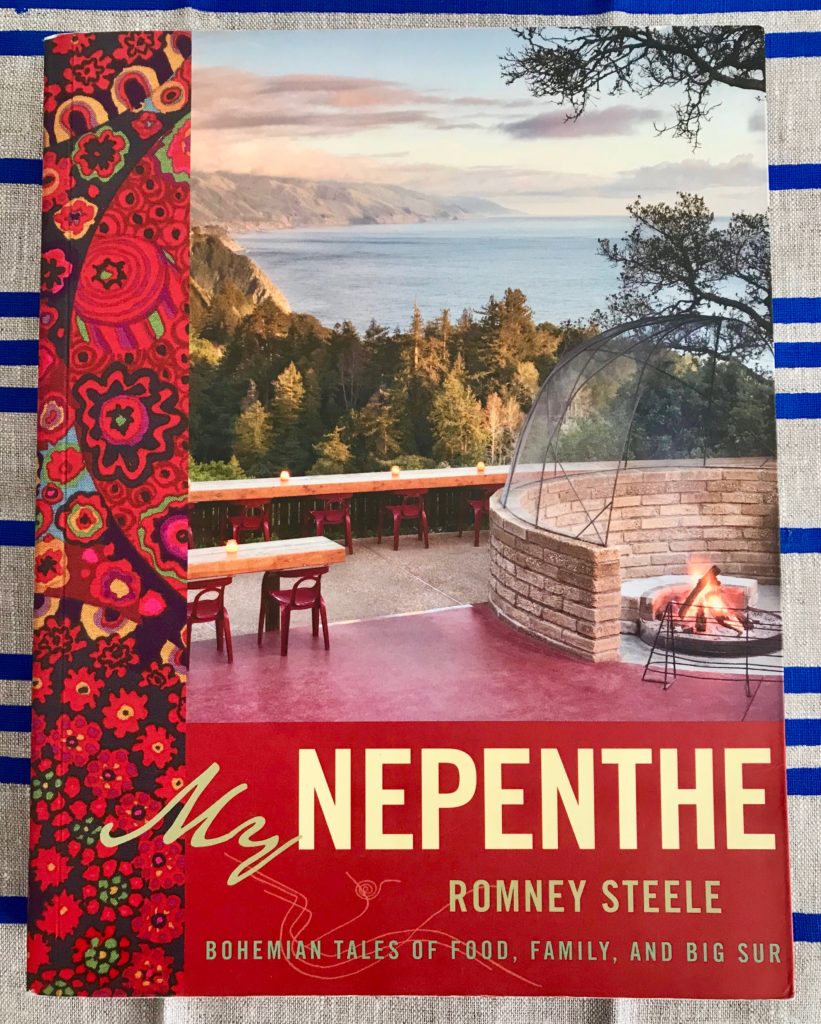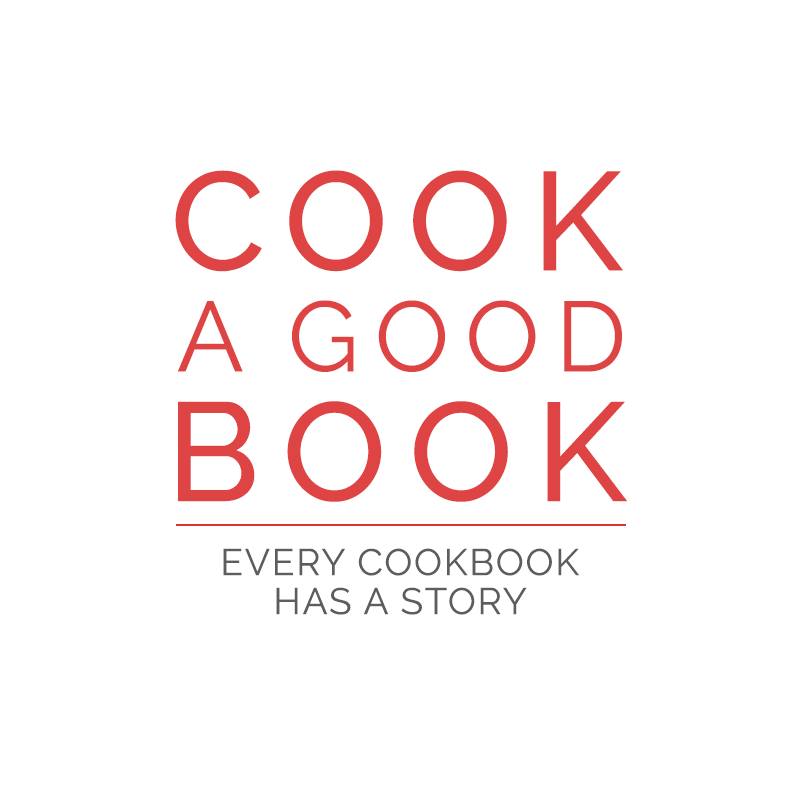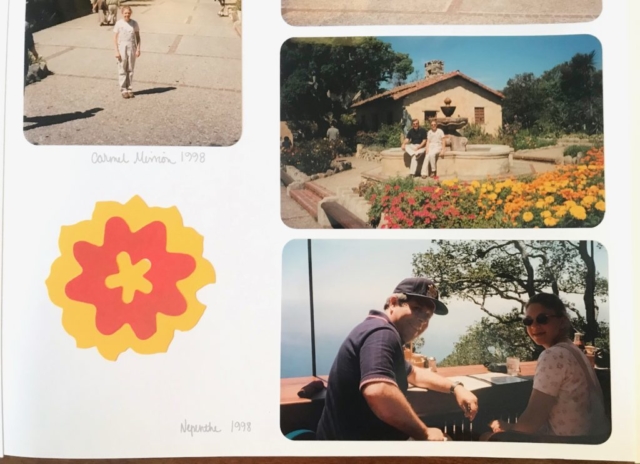
My Nepenthe: Bohemian Tales of Food, Family, and Big Sur
Romney Steele
Photographs by Sara Remington
2015
Purchased from the UCLA bookstore on a rough day at work
Recipes cooked: Nepenthe cheese pie, chopped salad with Roquefort dressing
Recipes I want to cook: Ambrosiaburger, butter and radish sandwiches, Day at the Beach minestrone soup, Lolly’s lamb curry, marinated fresh Monterey sardines, sangria a la Nepenthe
Difficulty to make: Easy to medium
Difficulty to source: Easy to medium
At Nepenthe and Big Sur in 1998 and 1999
My dad took me to Nepenthe restaurant in Big Sur in 1998, the year that I turned 15, for an ocean science conference in Monterey with then President Bill Clinton, then Vice President Al Gore, and future Secretary of State Hillary Clinton for keynote speakers. I was a young conservationist who would thrill at the opportunity to participate any way that I could, and to explore the Monterey Bay Aquarium and go whale watching. I was also obsessed with John Steinbeck books, especially Cannery Row, East of Eden
, and Travels with Charley
, and Steinbeck was very much a northern California guy, with a new museum in his honor in nearby Salinas, his hometown. I was the last in my family to visit California, too. My parents lived in Monterey twice in the 1970s, first after my dad graduated from the Naval Academy and married my mom in 1973, so he could study meteorology and oceanography at the Naval Postgraduate School, then, after a stint in Honolulu, they returned and had my two older siblings. I came along later on the east coast, where they still reside.
I have a picture of my dad and me at Nepenthe, seated along the wooden bar overlooking the craggy coastline, menus in front of us. I’m wearing an off-white floral shirt with tan corduroy overalls. I hope that I ordered the Ambrosiaburger, as I have every time since then, but I still remember my dad leaning in to say something along the lines of, “The food is kind of beside the point here. We’re paying for the view!”
The food is kind of beside the point in My Nepenthe, too. You’re here for the stories. Like many of my other favorite contemporary cookbooks, My Nepenthe is a personal history with recipes interspersed. The recipes aren’t an afterthought at all, though—anyone with any curiosity about mid-century American food history will revel in reading recipes for Crab Louis salad, orange chiffon cake, and Lolly’s lamb curry, which even updated feels dated. These are recipes passed down four generations—they’re worth saving, and savoring.
Chopped salad with Roquefort dressing
The saffron threads of the family tapestry are what makes this cookbook so special, though. Bill and Lolly Fassett married soon after meeting each other in 1935; they both came from exceptionally affluent yet nontraditional families; Lolly had lived in Italy and danced with Mussolini as a teen, and she favored eastern Asian design, while Bill was a well educated merchant marine who loved to play the stock market and was known to say “never let the truth get in the way of a good story.” They were drawn to Big Sur by the small but growing community of artists and by its natural beauty. They opened Nepenthe’s doors in 1949. They had five children together, and Bill had another child and cohabited with another woman later in his life, but he and Lolly never divorced. The Fassetts’ youngest daughter together, Kim, is the mother of the cookbook’s author, Romney Steele.
It goes on. Steele’s mother had her out of wedlock, her Beatnik father disappeared shortly after she was born, and her father then returned to Nepenthe when she was about 13 and married a family friend, at which point Steele’s mother moved away with Steele and her siblings, while her father and his new wife—the ones not related to the Fassetts—lived on the property and remained close confidants of Bill and Lolly’s for the rest of their lives. And Steele is one grandchild of fourteen, many of whom lived on the property as kids, dancing for guests and bathing in an outdoor tub and playing “restaurant” together. There are twenty great-grandchildren (so far). For a story with so many offspring set mostly in the fifties and sixties at the advent of hippie culture in the Bay Area, it’s a feat that there’s not a single mention of sex. And if it all starts to sound a little like a commune, well, that’s another word that doesn’t appear in the book. (Nor does school, that I can recall.) As someone who went out of her way to study the sixties counterculture in college, this wholesome cookbook is wonderfully illicit, and I loved it.
But it feels shameful to dwell on that. My Nepenthe is a love letter to Lolly Fassett, and you will fall in love with her, easily. She opened her restaurant and also her home to the coastal community, welcoming notable artists and poets alongside the poor and disenfranchised. The only group she never let in, it seemed, were the Hell’s Angels. As the family’s story unfolds, the restaurant expands, adding a gift shop and cafe and housing for its staff. You won’t find a picture of all of Nepenthe in the book; I know from being there that there are too many ancient trees, craggy cliffs, and thicketed pathways for that.
Nepenthe cheese pie—like a cheesecake with a spring in its step—with sour cream topping
You’ll get around ninety recipes, though, roughly half for breads, cookies, cakes, pies, and other desserts. I gravitated to the Nepenthe cheese pie (page 116), which promises to be “light and creamy and not dense like a cheesecake.” The introduction goes on, “My aunt Holly always says there are three ways to mess it up: first by overcooking the crust, second by overcooking the filling, and third by overcooking the topping, so ‘do not leave kitchen while baking these sensitive little things,’ as it instructs on the original recipe.” I think this cannot be messed up at all. I’ve made it twice, potentially overcooking the filling the first time and adding orange zest and juice the second time (gasp, yes, acid in baking!) just to see what might happen, and both came out beautifully. The best part is the sour cream topping—I had never even heard of it, and now I cannot imagine life without it. “Oh, yes,” my mom said, when I told her about the recipe, “we used to do that.” Why not now? I served the orange version at a dinner party to a bunch of 30-somethings and it went over beautifully.
Chapter navigation is a bit difficult, and ingredients confusingly appear over the recipe names, introductions, and instructions, but all is forgiven with the storytelling and photography. “The spirit of Nepenthe is what most people come here for,” Lolly said. “We are in the perfect setting and we should be guardians of its timeless quality.”
My Nepenthe does the same in cookbook form. It would make a wonderful gift for any California bohemian or historian or epicurean. You’re invited to join the Fassett family with every page, and for that, we should all be so lucky to accept.















